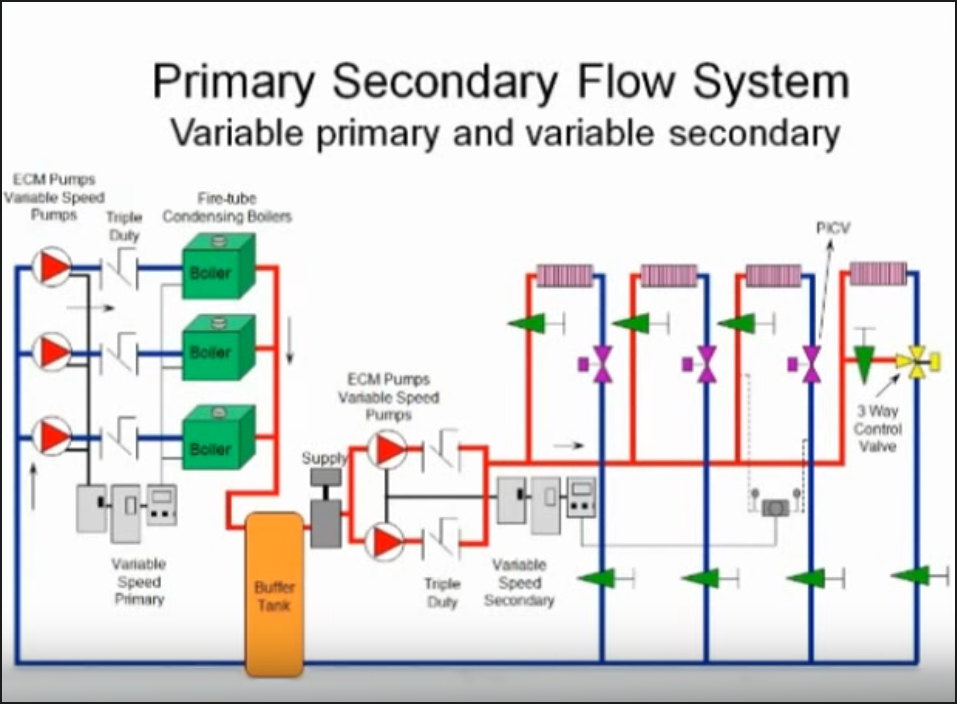Pump Motor Efficiency Requirements Part 1: A Three-Decade Retrospective
/By Mark Bingham
This series provides an evolutionary perspective on motors and increasing motor efficiency requirements. We begin with a brief look at motor history and the key developments in motor efficiency classifications over the last three decades.
Early Induction Motor Design
AC Induction motors have been around for over a century. In 1887, Nikola Tesla patented the alternating current (AC) induction motor. This revolutionary design offered greater efficiency and reliability than previous direct current (DC motors). Tesla's invention, combined with the efforts of other engineers, laid the foundation for the widespread adoption of electric motors in industrial applications (The Evolution of Industrial Electric Motors | Good Fruit).
Efficiency was not a primary consideration in early induction motor design. Motor manufacturers developed insulation that could withstand higher temperatures, allowing for greater temperature rises. This reduced the amount of copper, aluminum, and steel required, which resulted in reduced production costs. Unfortunately, the drive to reduce costs resulted in a corresponding loss of efficiency.
Motivating Factors for Developing High-Efficiency Motors
It is estimated that approximately 50 percent of electric energy consumption is by electric motors (Electric Motors—European Commission). Given motors' large share of energy consumption and the need to reduce climate change through energy efficiency, it's not surprising that energy efficiency standards for motors have become more stringent in recent decades.
There are many nuances and subtleties of motor efficiency requirements that this post does not cover. Some special motors are subject to lower efficiency requirements, and others are exempt from efficiency requirements. For example, fire pump motors must comply with an efficiency classification below that of motors discussed in this article. This post focuses on the currently required efficiencies of three-phase motors, operating at 600 volts or less, because they are the most commonly used motors in the HVAC and plumbing industries. Efficiency requirements for motors in many other industries are similar.
Federal Efficiency Directives
Over the past three decades, there have been numerous federal government directives to increase electric motor efficiencies. Each of these directives has referenced a version of the National Electric Manufacturers Association (NEMA) Standard MG 1 for motors and generators. In 2008, the International Electrotechnical Commission (IEC) established similar efficiency standards for the European Economic Area. The IEC standard has also evolved to include increased efficiency standards. NEMA and IEC have generally sought to create equivalent efficiency classifications. Table 1 below shows the classification name, the NEMA MG1 table reference, and the corresponding IEC classification for each efficiency classification.
table 1
New Standards Mark High-Efficiency Gains
Each higher classification reduces motor losses by around 20%. That is, a Premium Efficient (IE-3) motor has 20% fewer losses than an Energy Efficient (IE-2) motor. At the time of this post, Premium Efficiency is required for most three-phase pump motors in the U.S. As noted in the table, beginning in 2027, newly manufactured motors between 100 and 250 horsepower will be required to meet Super Premium Efficiency standards.
Table 2 below shows the nominal Premium and Super Premium efficiencies for several horsepower ratings of enclosed frame 2-pole (3600 rpm nominal) and 4-pole (1800 rpm nominal) motors. Most of the motors in Table 2 have been selected for this article based on their frequent use in HVAC pumping applications. Complete tables can be found in NEMA MG 1-2024. Many motor manufacturers also publish the NEMA tables. Note that the efficiency requirement generally increases with horsepower in each category and that 4 pole motors have higher efficiency requirements than 2 pole motors.
Table 2
Super Premium Efficient Motors—and Beyond
The current NEMA MG-1 efficiency classes are for line-operated motors (no variable speed drive required); however, the IEC standard for IE4 and IE5 is for variable speed operation. While Super Premium Efficient Motors (IE-4) may be line-operated, current technologies for IE-5 motors require a variable speed drive to run the motors.
A future blog post will explore IE5 motors and their applications for pumps, and another will examine electronically commutated motors, which are high efficiency, small horsepower, usually single phase, and share many design characteristics with IE5 motors.





